Brand Design Packages: What to Include and Costs in 2024
In today’s competitive business environment, the importance of a strong brand presence cannot be overstated. A comprehensive brand design package is essential for establishing trust, consistency, and recognition across various platforms. So, what exactly do brand design packages entail, and how can it benefit your business? In this blog post, we’ll delve into the essential components of complete branding packages, discuss the factors that influence their cost, and provide guidance on choosing the right designer or agency for your branding needs. Let’s get started!
Short Summary
- Brand design packages are sets of elements that create a unified brand identity and attract customers.
- Essential components include custom logo design, consistent color palette, typography selection, print materials, digital marketing assets & website design/development.
- Factors influencing cost range from scope of work to complexity. Choose the right designer or agency with experience & portfolio for best results.
Understanding Branding Packages
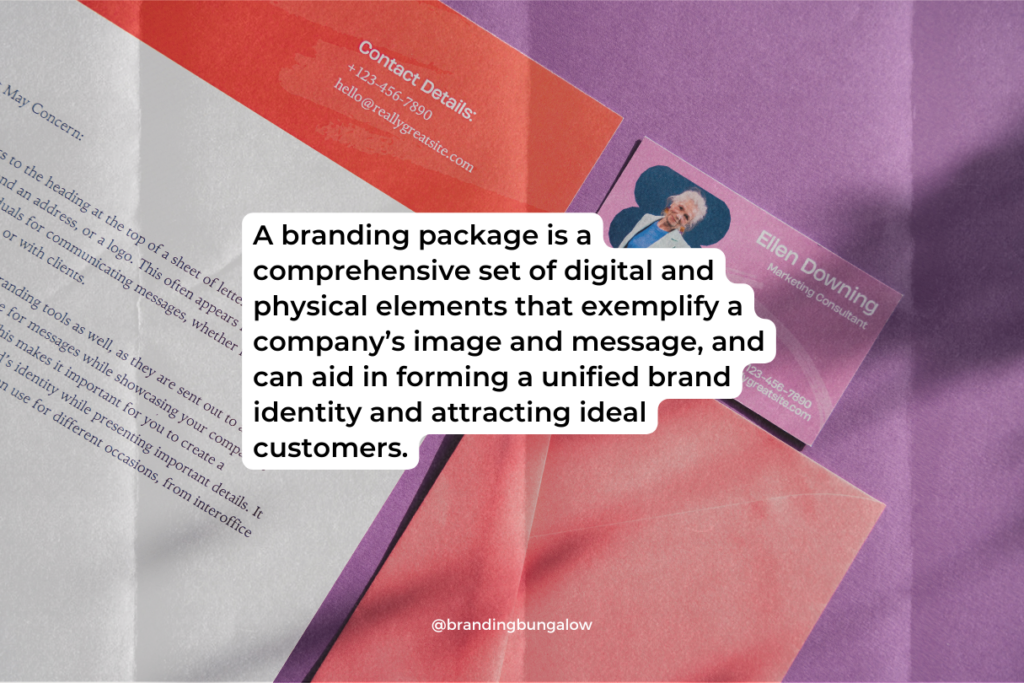
A custom branding package is a comprehensive set of digital and physical elements that exemplify a company’s image and message. This is meant to create trust and uniformity across platforms. With your own branding package, this can include:
- Logos
- Fonts
- Messaging
- Colors
- Stationery guidelines
- Photography guidelines
- Email templates
By fostering trust and uniformity across different channels, a branding package can aid in forming a unified brand identity and attracting ideal customers.
The cost of brand design packages is influenced by factors such as:
- The complexity of the project
- The number of assets required
- The expertise of the designer or agency
- The timeline for completion
One of the most essential assets in a branding package is the brand style guide. The brand style guide helps maintain consistency across all platforms. Utilizing brand style guides effectively ensures that your brand’s identity remains cohesive and recognizable.
Essential Components of a Complete Branding Package
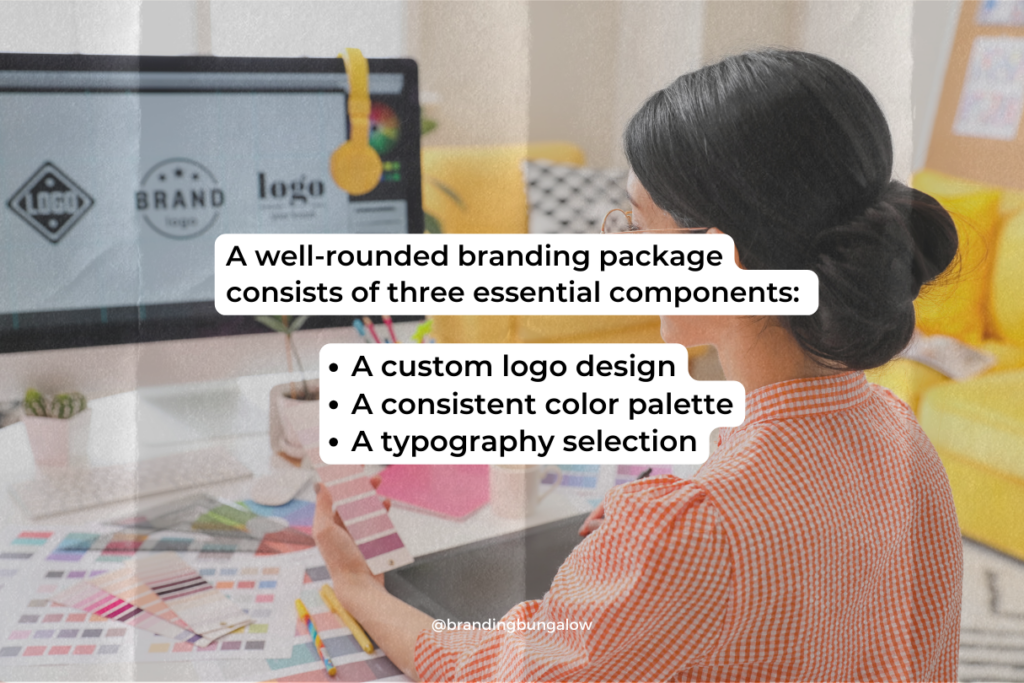
A well-rounded branding package consists of three essential components: a custom logo design, a consistent color palette, and a typography selection. These elements work together to create a cohesive brand identity that resonates with your target audience and sets your business apart from the competition.
By combining these three elements, you can create a unique and memorable brand that stands out from the crowd.
Custom Logo Design
A custom logo design serves as the face, foundation, and cornerstone of your company. It is the representation that customers will associate with your company, and its brand colors play a significant role in creating a memorable and consistent brand image. A complete logo system is integral in a full branding package. It facilitates brand recognition and sets the overall tone for the remaining branding elements.
When selecting a logo designer, it’s important to consider their experience, creativity, and ability to develop a logo for your specific needs. This includes considering factors such as the types of campaigns you’re running and the design partner’s ability to adjust the size and location of any elements as necessary.
Consistent Color Palette
A consistent color palette is crucial for creating a cohesive brand experience. By leveraging the power of color psychology, you can evoke meaningful emotions and enhance brand aesthetics. Each color should be identified by its Pantone code or CMYK/RGB values, ensuring consistency across all marketing campaigns and materials.
Choosing the right colors for your brand involves understanding the emotions and associations they evoke. You should also consider how they align with your brand’s personality and target audience. This ensures that your visual identity resonates with customers and sets the tone for the rest of your branding elements.
Typography Selection
Typography plays a pivotal role in conveying the energy and emotion associated with a brand, thus creating positive associations. Brand guidelines should provide guidance on the fonts to be used, as well as capitalization, spacing, and size instructions. Aligning your typography with your brand’s personality and messaging ensures that your visual identity remains consistent and communicates the right message to your target audience.
For example, Kevin Craft utilized a modified sans serif typeface for the Sungrown brand design package, which effectively conveyed the brand’s energy and emotion. By carefully considering your typography selection, you can create a cohesive brand identity that resonates with your audience and sets your business apart from the competition.
Additional Assets for an Extended Branding Experience
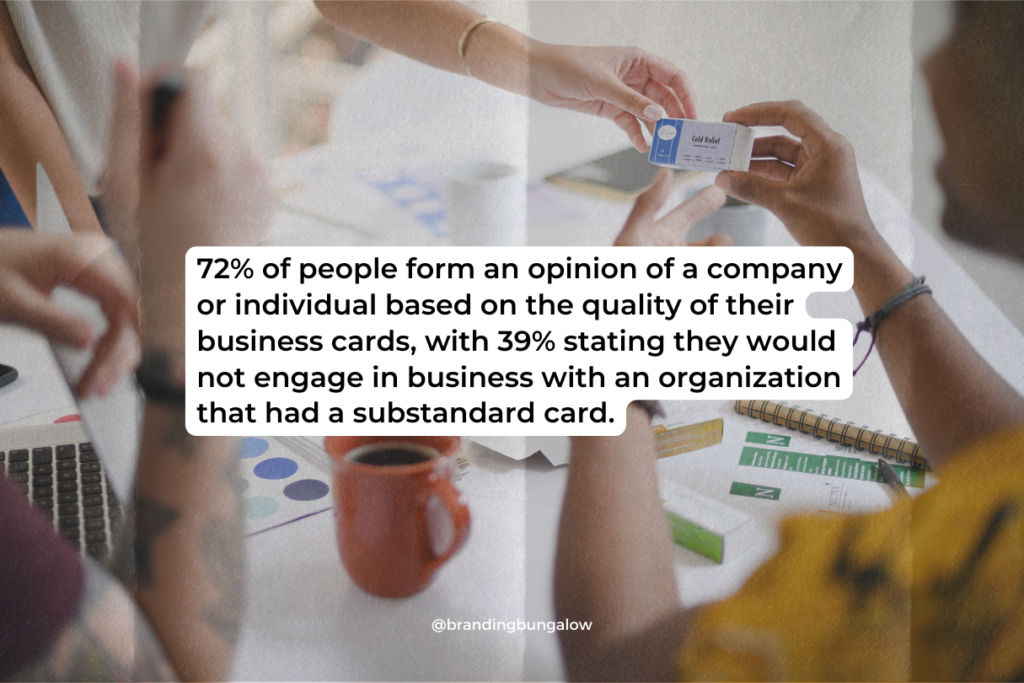
To further enhance your branding package, consider incorporating additional assets such as print materials, digital marketing assets, and website design and development. These elements can help extend your brand’s presence across various platforms, ensuring a consistent and memorable experience for your target audience.
Print materials can include brochures, flyers, business cards, and other physical items that can be purchased.
Print Materials
Business cards, letterheads, brochures, and other print materials, are essential for maintaining brand consistency and making a strong first impression. In fact, one study found that 72% of people form an opinion of a company or individual based on the quality of their business cards, with 39% stating they would not engage in business with an organization that had a substandard card.
When designing print materials, it’s crucial to consider the visual flow of the card and ensure that the necessary information is displayed clearly and concisely. Collaborating with a design partner can help you create print materials that effectively showcase your brand while making a lasting impression on your audience.
Digital Marketing Assets
Digital marketing assets, such as social media graphics, email templates, and ad designs, are vital for maintaining a consistent brand presence across online platforms. These assets should adhere to your brand guidelines, incorporating the same typography, logos, and color palette as your other branding elements.
When creating digital advertising graphics, it’s important to consider the types of campaigns you’re running and provide your design partner with the necessary information to align with your objectives. This ensures that your digital marketing assets effectively represent your brand and resonate with your target audience.
Website Design and Development
A well-designed and developed website is essential for showcasing your brand and converting visitors into customers. Your website serves as a digital storefront, introducing your brand to your intended audience and providing them with valuable information about your products or services.
To create an effective website, it’s important to prioritize aesthetics, user experience, and search engine optimization. Collaborating with web developers and designers can help you create a website that effectively represents your brand, engages your audience, and ultimately drives growth and recognition for your business.
Factors Influencing Branding Package Costs
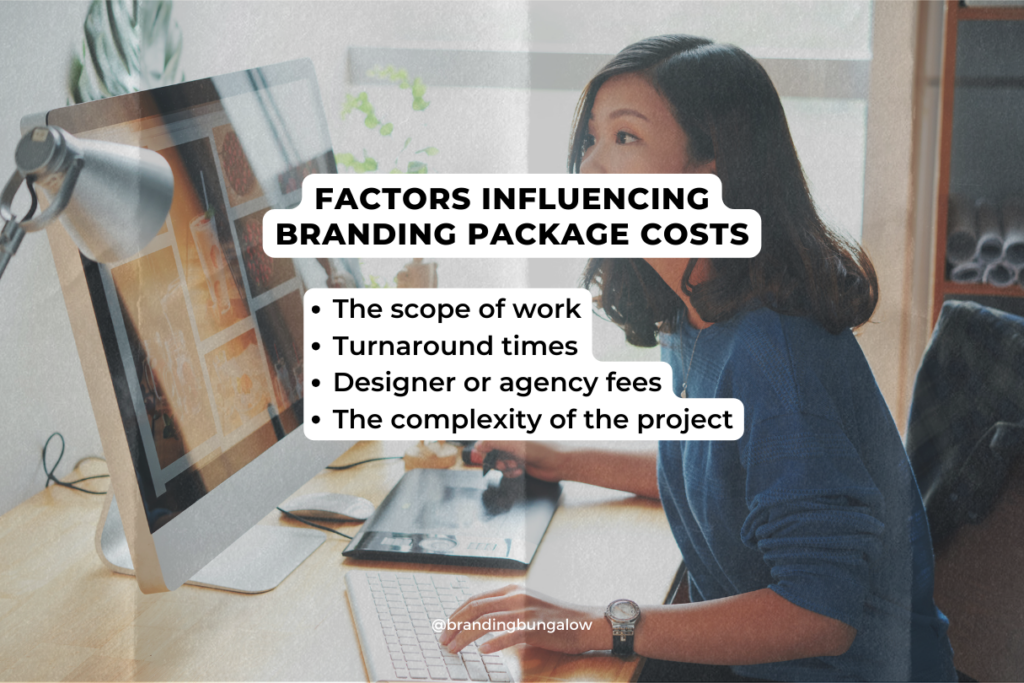
The cost of brand design packages is influenced by various factors, such as:
- The scope of work
- Turnaround times
- Designer or agency fees
- The complexity of the project
Freelance graphic designers typically charge between $15 and $300 an hour, depending on their skills and experience. The cost of brand design packages can range from $1,000 to over $100,000, depending on the provider and the scope.
When considering the branding package cost, it’s important to weigh the value of the investment against the potential return. A well-executed branding package can contribute significantly to business growth and recognition. Solid branding can contribute to as much as a 30% increase in sales.
How to Choose the Right Designer or Agency for Your Branding Needs
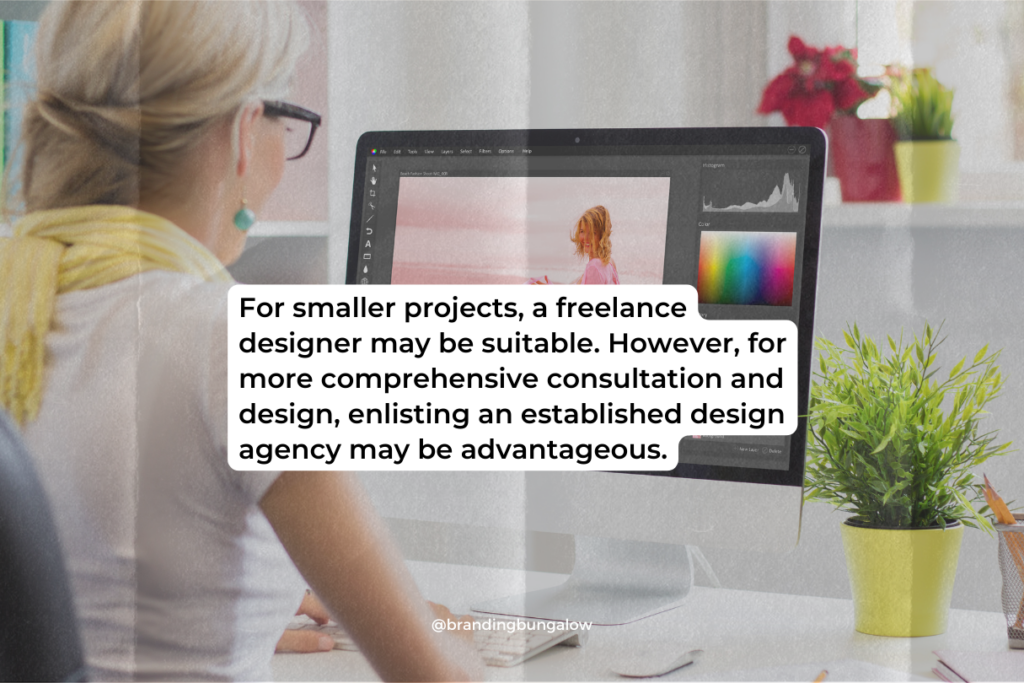
Selecting the right designer or agency for your branding needs involves considering factors such as:
- Experience
- Portfolio
- Pricing
- Communication style
For smaller projects, such as logo design, a freelance designer may be suitable. However, for more comprehensive consultation and design, as well as research-based brand development and implementation of various assets, enlisting an established design agency may be advantageous.
One platform to help you identify the ideal designer for your requirements is the Designer Search feature on Dribbble. By carefully evaluating potential designers or agencies, you can find the right partner to create brand design packages that effectively represent your brand and drives business growth.
Real-Life Examples of Successful Branding Packages
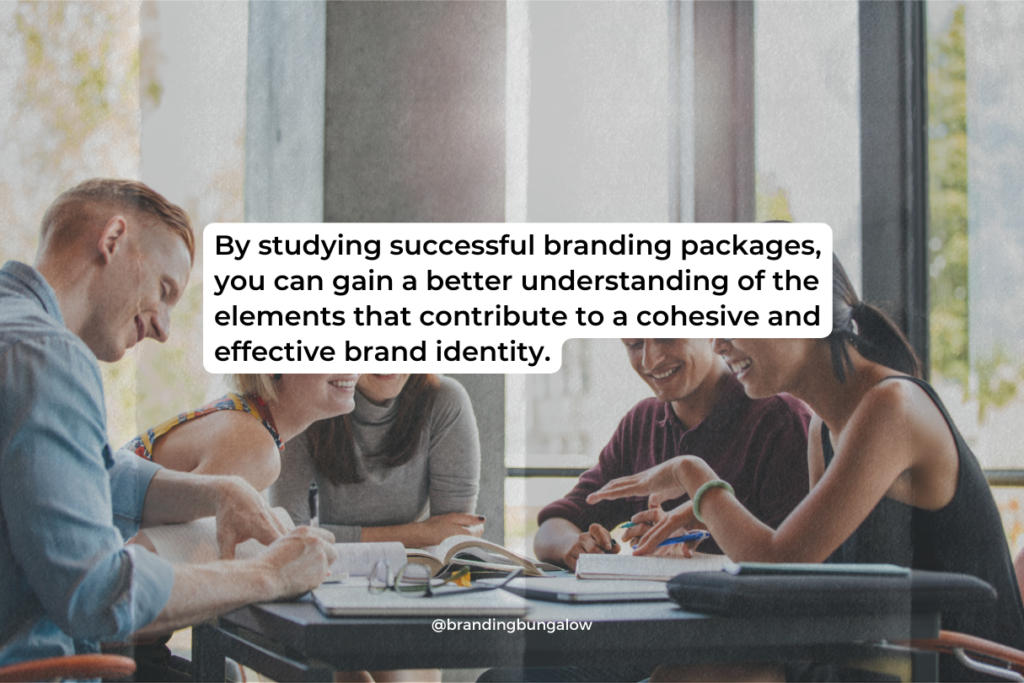
Examining real-life examples of successful brand identity packages can provide inspiration and insight into the impact of a well-executed branding strategy on business growth and recognition. Mareiner Holz from Germany is a good example of an excellent corporate identity package. They specialize in wood finishing. Their branding package promotes a feeling of tranquility, peace, and a connection to nature, utilizing subdued and neutral colors, with black, white, and various shades of grey and brown.
By studying successful branding packages like Mareiner Holz, you can gain a better understanding of the elements that contribute to a cohesive and effective brand identity. This knowledge can help you create a branding package that includes:
- A strong and memorable logo
- Consistent use of colors and typography
- Clear and compelling messaging
- Well-designed marketing materials
- A cohesive online presence
By incorporating these elements, you can create a branding package that resonates with your target audience and sets your business apart from the competition.
Summary
In conclusion, a comprehensive branding package is an invaluable asset for businesses seeking to establish trust, consistency, and recognition across various platforms. By carefully considering the essential components, such as custom logo design, consistent color palette, and typography selection, as well as additional assets like print materials, digital marketing assets, and website design and development, you can create a branding package that effectively represents your brand and drives business growth. As you embark on your branding journey, remember to weigh the cost of your investment against the potential return and choose the right designer or agency to help bring your vision to life.
Frequently Asked Questions
What do you include in a branding package?
A branding package typically includes four key elements: logo design, visual identity guidelines, brand messaging, and corporate stationery. It is a must-have for any business, helping to establish their unique presence in the marketplace.
Having a strong brand identity is essential for any business. It helps to create a recognizable image that customers can associate with the company. It also helps to differentiate the business from its competitors. A branding package can be a branding package.
What is an example of a branding package?
A branding package typically includes business cards, email templates, color palettes, and product packaging, to create a cohesive brand identity.
What is a brand package?
A brand package is a collection of assets that unify the appearance and identity of a brand, from logos and colors to messaging and style guides. By using a consistent set of elements across their branding, companies can communicate a clear identity and message.
This helps to ensure that customers recognize the brand and understand its message, no matter where they encounter it. It also helps to create a unified look and feel across all of the company’s marketing materials, from websites to print ads.
What is the typical cost of a branding package?
The cost of a branding package ranges from $1,000 to over $100,000.
What additional assets can enhance a branding package?
Print materials, digital marketing assets, and website design and development can all help create a comprehensive branding package.
Recent Blog Entries
Discounts to Dubsado CRM, Helcim Payment Processing and...
Brand audits can save your business' sinking marketing ship.
What's happening to Coke and what you can learn from it.
Shop Products
Create a personalize brand board by taking elements from our 3 signature brand board templates.